

Wall Colmonoy offers 3D printed parts, manufactured on the Desktop Metal Shop System™. We produce parts with superior surface finish and resolution versus laser-based 3D printing systems at a competitive cost.
The Wall Colmonoy Additive team will provide advice to advance complex manufacturing schemes, using state of the art modelling technology and experience as the UK’s first machine shop to adopt the Shop System™.
High Speed
With high-speed, single-pass print technology, we can produce high-quality metal parts at high speed- meaning hundreds of metal parts per day.
Superior Print Quality
Our system produces high-resolution parts with incredibly fine feature detail. Surface finishes as low as 4µm Ra out of the furnace, and <0.1µm Ra with mass finishing are possible. Components are fully dense, solid parts, no debind or infill required.
High resolution
Our binder jet technology features high resolution prints. With 1600×1600 DPI native, and over 670M drops per second, we deliver high-speed, high-resolution 3D printing.
Flexible manufacturing
Wall Colmonoy can cost effectively 3D print low-volume batches of complex parts due to elimination of tooling. We produce hundreds of near-net-shape parts every day with dramatically reduced labor costs and expanded geometric flexibility. We can respond quickly to the need for variations and improvements.
Fewer steps
Reduce the complexity of making a part. Parts that previously required multiple steps can now be produced in one, avoiding the costs of complex assembly.
Less waste
Improve your environmental footprint, using only what is needed for the final part. Binder jet parts have zero waste, as left over powder is reused.
Design freedom
Create internal channels, thin walls, overhangs, unsupported arms and curved surfaces to make the most of the design freedom offered by additive manufacturing.
Reduced inventory
Instead of holding a vast inventory of thousands of products- print what you need at the time when you need it. The responsiveness of our binder jetting system means you can have a part printed within a few days.
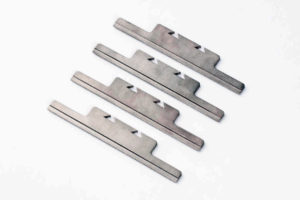
Knives for aseptic packaging
Cast components typically only make sense when producing at volume, due to the costs of developing tooling. 3D printed components can be produced in small to medium volumes without any tooling costs, which is useful for replacement parts or low volume runs which are traditionally hard to source.
The properties of a printed part usually meet the properties achieved with a cast part. Parts printed on the Shop System™ are typically 95% dense.
| Cast vs. Printed Properties Comparison: 17-4PH | ||||
| Standard | Shop System™ H900 Heat Treat | Cast H900 Heat Treat | Shop System™ As Sintered | |
| Yield strength (Mpa) | ASTM E8M | 981 ± 50 | 1000 | 660 ± 40 |
| Ultimate tensile strength (MPa) | ASTM E8M | 1205 ± 35 | 1170 | 912 ± 35 |
| Elongation at break (%) | ASTM E8M | 11.9 ± 5 | 5 | 5.9 ± 2 |
| Young’s modulus | ASTM E8M | 185 ± 20 | 190 | 178 ± 30 |
| Hardness (HRC) | ASTM E18 | 40.5 ± 2 | 41 | 26.4 ± 1 |
| Density (g/cc) | ASTME B311 | 7.5 -7.66 | 7.8 | 7.5 ± 7.99 |
3D printed components are more suitable for iterative design. Changes can be made and printed in the same day, allowing flexibility and innovation in the design process. A large part of the cost of a cast part is sunk into tooling which can be expensive to design and develop- so making a change will often require that tooling is redesigned, resulting in mounting costs. With a cast part, designers sometimes need to sacrifice design features in order to achieve ease of manufacture.
Wall Colmonoy Additive team are excited to discuss your latest 3D printing project. To discuss part suitability contact us.
| Print Technology | Binder Jetting |
| Print direction | Uni-directional |
| Maximum throughput | 800 cc/hr |
| Layer thickness | 50 µm – 100 µm |
| Binder jetting module | 70,000 nozzles (5x redundancy) |
| Dimensional tolerance of parts | ± 3.0% |
| Native printhead resolution | 1600 dpi (1 pL native drop size) |
| Build Envelope | 8L 350 x 222 x 100 mm (13.8 x 8.7 x 3.9 in) |
| Optimum part size | For best results during printing and sintering, we recommend limiting the part size to 150 x 100 x 50 mm. |
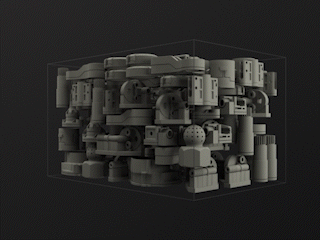
Parts can be supplied as printed, or surface polished.

Test pieces showing finish as sintered and polished using electo / vibratory polishing.
The Shop System™ currently prints in 17-4 PH, IN 625 and 316L. Wall Colmonoy alloys for the Shop System™ are under development, including cobalt-based Wallex® and nickel-based Colmonoy® alloys. Contact us for further information.
Our Desktop Metal Studio System uses a simple 3-part process to deliver high quality finished parts.
Step 1: Print
For each layer, the printer spreads metal powder across the build bed, and precisely jets a binding agent to bond loose powder and define part geometry. Layer by layer, metal powder and binder is deposited until the entire build volume is packed with bound parts and surrounding loose powder.
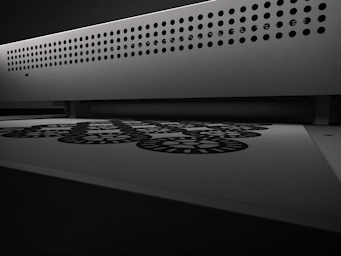
Step 2: Depowder
Once an entire build is complete, the build box is removed and placed in a powder station for bulk and fine depowdering—with the help of a hand-held air pick. Loose powder is removed from the parts and recovered via a built-in powder recycling system with powder sieving.
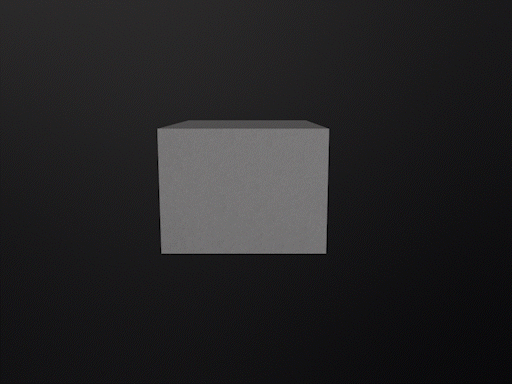
Step 3: Sinter
Depowdered parts are placed onto trays in a shop-safe, high-throughput furnace for batch sintering. With an external gas hookup and temperatures reaching 1400ºC, the Shop System™ furnace is able to deliver quality and reliable sintering in a shop-friendly format.
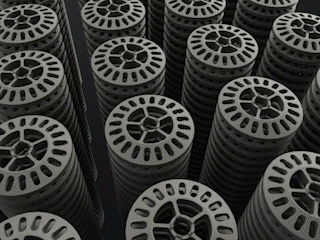
CONTACT
Wall Colmonoy Limited
Alloy Industrial Estate
Pontardawe, Swansea,
Wales (U.K.) SA8 4HL
E: additivemanufacturing@wallcolmonoy.co.uk
T:+ 44 (0) 1792 860647